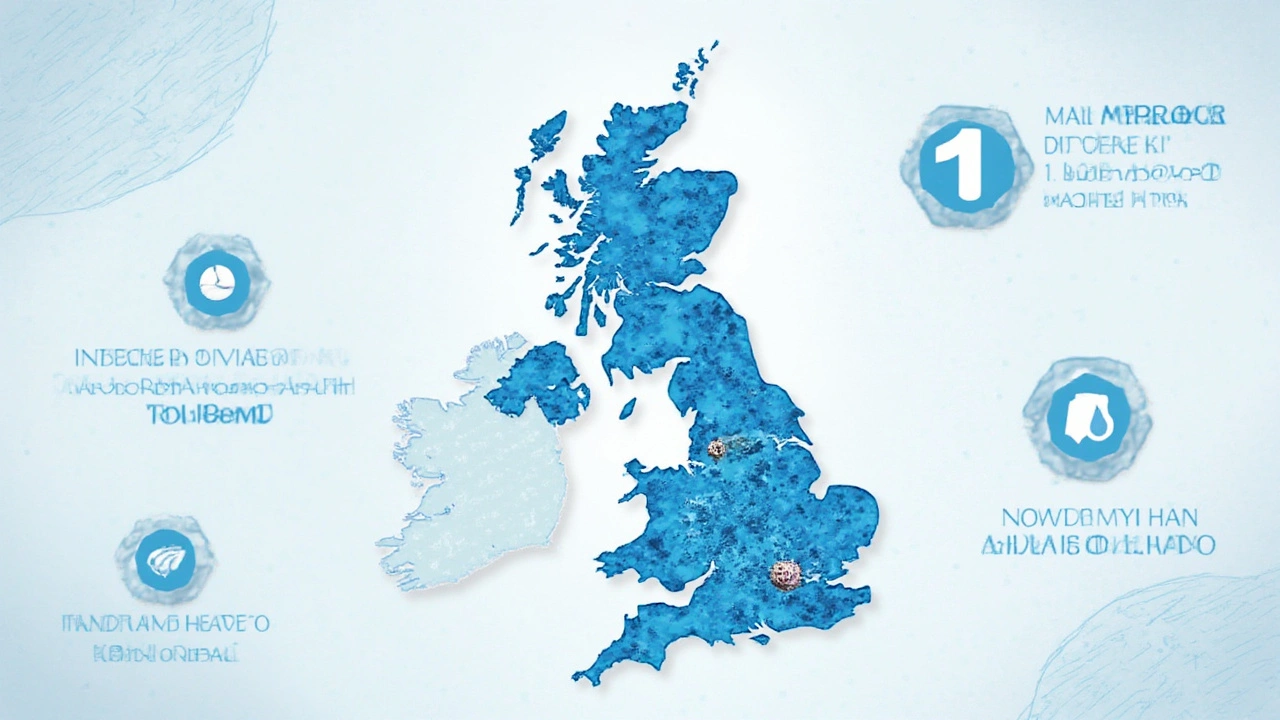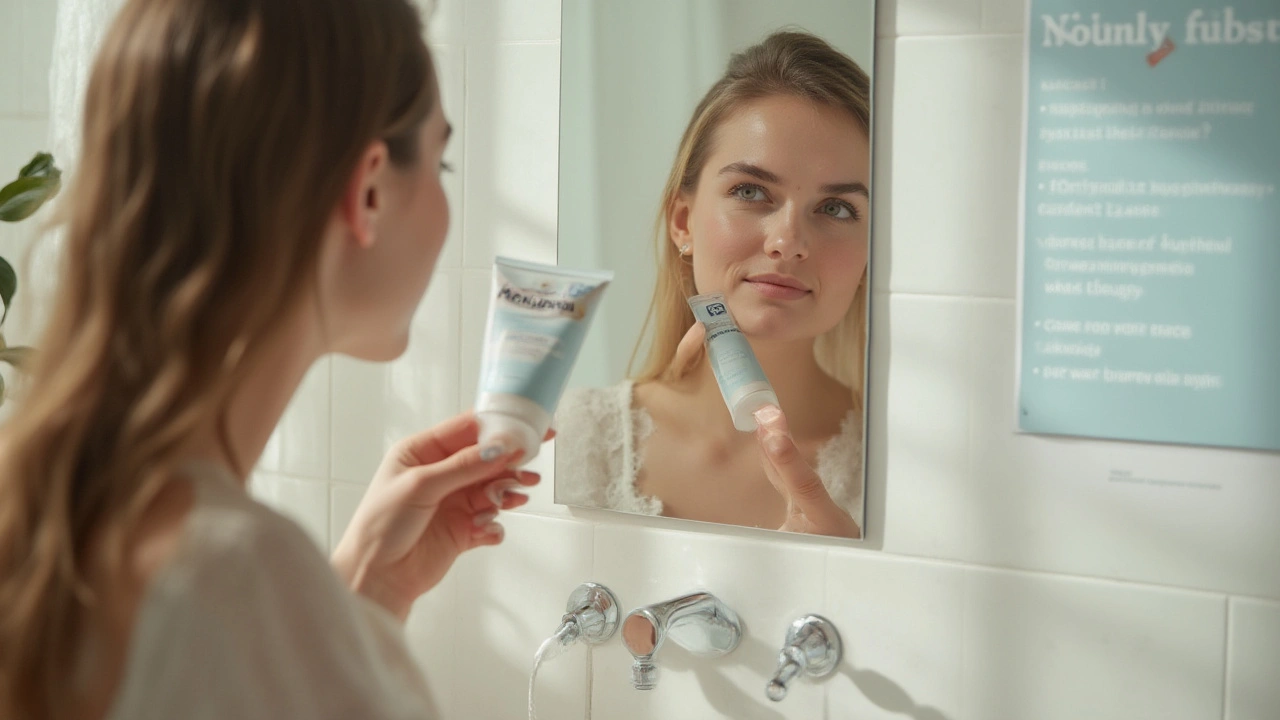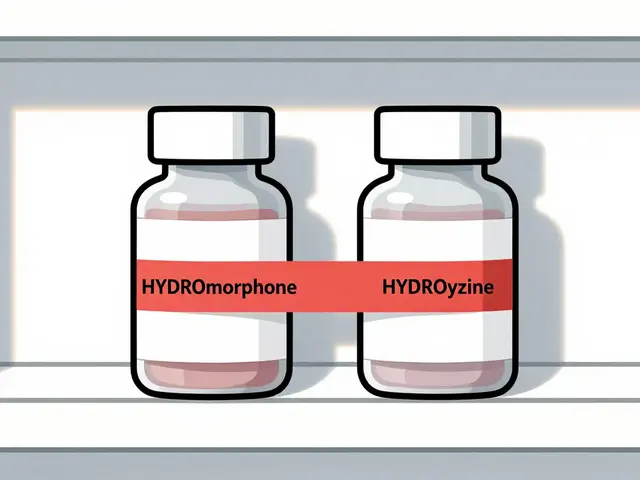Let’s be real: waking up to a zit on your chin the morning of a first date or a big meeting is just plain cruel. In Brisbane, where the humidity seems designed to clog every pore you have, fighting acne sometimes feels like my own version of a battle royale. My bathroom shelf has seen more failed pimple potions than I’ll admit, but Benzac? That’s one tube that’s stuck around. Benzac, with its main weapon—benzoyl peroxide—doesn’t just dab at blemishes and hope for the best; it gets to work under your skin to break down oil, kill acne bacteria, and dry those breakouts right out. If you’re tired of guesswork or sick of spending on trendy creams that just smell nice, maybe it’s time to get a closer look at what makes Benzac the workhorse it’s known to be.
How Benzac Works and What Makes Benzoyl Peroxide Special
It’s easy to spot Benzac in a chemist: the bold lettering, those clinical vibes. But what really makes it tick? The magic is in benzoyl peroxide, and Benzac has it in strengths from 2.5% to 10%. Here’s the simple science—acne starts when your hair follicles trap oil and dead skin, giving a comfy home to p. acnes bacteria. Benzoyl peroxide isn’t polite; it barges in, breaking down the walls of these bacteria and giving them no place to hide. This nasty bacteria just can’t develop resistance, so you won’t have to worry about Benzac losing its punch.
But Benzac does more than just bug-busting. It also soaks up oil and helps slough off the flaky stuff clogging your pores. I remember slopping a layer on after one too many midnight chicken burgers (bad habits, guilty conscience, clogged face!) and watching it dry pimples while keeping new ones at bay. One cool tip: lower strengths (like 2.5%) are just as good as the 5% or 10% gels for most folks, and they’re less harsh if your skin throws a tantrum like mine. Dermatologists in Australia actually recommend starting low and only cranking up the strength if your skin plays nice for a few weeks. It’s not about going nuclear—think precision strike over napalm.
If you’re wondering when to slap it on, nighttime is the winner. Benzoyl peroxide can bleach fabrics, so use your least favourite pillowcase or sleep on a towel if you must. And don’t forget, this stuff takes time. Studies backed by real results show Benzac can start clearing mild acne in as little as a week, but for some, it can be more like a month. Consistency is more important than chasing overnight miracles.
One more thing: benzoyl peroxide has been around for decades, and it’s on the World Health Organization's list of essential medicines. That’s about as solid a stamp of approval as you’ll ever get in skin care. But just because it’s common doesn’t mean you should go slathering it all over like sunscreen. Spot treat first to avoid angering your barrier—you want it to work for you, not against.

Tips for Using Benzac: Side Effects, Layering, and Smart Application
I’ve learned, sometimes the hard way, that less really is more with Benzac. When I first started, I got carried away and ended up with red, flaky patches that itched like crazy. Turns out, irritation is the most common problem, but it’s avoidable if you play things smart. Always wash your face with a gentle cleanser first—nothing gritty, no harsh scrubs. Pat your face dry, wait a minute for things to settle, then dab a thin layer only where you need it. No need to cover every inch of skin; that’s just inviting a bad time.
Moisturizer is your new best mate. Some people freak out at the idea of putting moisture on oily or acne-prone skin, but trust me, skipping it is begging to flake. Pick a light, fragrance-free moisturizer—look for labels like “non-comedogenic” or “oil-free.” You can also layer a moisturizer before Benzac, wait a few minutes, then spot treat. This buffers the skin and helps cut back on dryness and stinging.
Sun exposure is a sneaky side issue. Benzoyl peroxide doesn’t exactly make you photosensitive, but irritated skin burns easier. If you’re outside a lot, especially around Brisbane where the sun isn’t joking, slap on a broad-spectrum SPF 30 or higher. Yeah, guys need sunscreen too. Ask Emily—she’s got me trained now; sunscreen is a must as soon as I walk out the door. She swears by tinted sunscreen, which I’ve tried (not bad!), but any broad-spectrum SPF does the job.
Now, about side effects. Redness, peeling, and dryness are the usual suspects. Rarely, some people get swollen, blistered, or really irritated skin. Stop and check in with your GP if your skin looks angrier than it did before you started. Allergy to benzoyl peroxide is super rare, but if you get swollen eyes, trouble breathing, or a rash everywhere, get help right away—don’t tough it out.
If you’re using other acne fighters—think retinol, salicylic acid, or antibiotics—introduce them slowly. Benzac and retinol can be a power duo, but only if you alternate nights. Too much at once just means redness. With prescription creams, ask your doctor or pharmacist; it’s not worth risking a full-face meltdown.
Benzoyl peroxide can bleach towels, sheets, and your favourite T-shirt faster than you’d expect. I’ve ruined a few. Stick to white fabrics, or just keep the Benzac off long enough for it to soak in properly. If you get a white patch on something by accident, hit it with a stain remover before it dries—the faster, the better.
Lastly, keep Benzac away from eyes, nostrils, and mouth—those spots don’t like the stuff at all. If it does sneak in there, rinse right away with lots of water.

Busting Myths, Exploring Benefits, and Knowing When to See a Pro
For all its simple packaging, Benzac sparks a ton of wild myths. Some people worry it’ll thin their skin or that using it too long will leave permanent marks—neither’s true. Benzoyl peroxide doesn’t mess with skin thickness. It does dry things out, but skip a few days and your face bounces back. Same for fears about purging: Benzac doesn’t make you break out worse unless the irritation is way over the top. Any breakout usually means it’s kicking out what was already lurking under the surface, not creating new problems from scratch.
Now for the perks: Benzac is safe for teens, adults, and almost anyone with mild-to-moderate acne. You can use it on the face, back, shoulders—basically anywhere that acne strikes, except sensitive zones. It’s not a miracle for cystic, deep, or very inflamed acne—that’s the time to call a dermatologist. Studies here in Australia have shown that benzoyl peroxide trumps almost every over-the-counter treatment for plain old pimples and whiteheads. That makes it a sunset staple for a lot of people here, especially with Brisbane’s summer sweats.
If your skin’s clear after a few weeks, you can cut down to using Benzac every other night or as a spot treatment. Don’t quit cold turkey—keep a low dose around for emergencies or the odd hormonal flare-up. Stress, sleep, and sugar still play roles, so don’t rely on a gel alone; eating cleaner and sleeping enough do help, even if it’s annoying advice.
So, when should you ditch the Benzac and see a pro? If you’re getting deep, painful lumps under the skin, or acne’s leaving scars, don’t wait. Dermatologists can prescribe oral medications and stronger creams that can save your skin long-term. If you’ve used Benzac for eight weeks and see absolutely zero change, it’s worth a re-think. Sometimes, something deeper is at play—hormones, underlying medical stuff, or medications.
All in, Benzac is a trusted classic that’s stuck around because it works for most people. It won’t fix every skin woe, but when you use it smart, it can be your skin’s best wingman. Just keep your shirts light-coloured, your moisturizer handy, and remember that real improvement takes time. Acne’s a nuisance, not a life sentence—so don’t throw every new idea at your face until you’ve given the classics a real shot.







Javier Garcia
July 10, 2025 AT 00:52I'm curious about how Benzac Gel stands up against other benzoyl peroxide treatments on the market. Does anyone have insights on its concentration levels or formulation specifics that make it more or less effective?
Also, I wonder about the timeline for visible results—how soon can someone realistically expect clear skin?
christian quituisaca
July 10, 2025 AT 01:09Great question! From what I've gathered and experienced, Benzac's formulation is uniquely stabilized to reduce irritation, which can sometimes be a dealbreaker with benzoyl peroxide products.
It often comes in various concentrations like 2.5%, 5%, and 10%, giving users flexibility based on their skin sensitivity and acne severity. What I love is that by starting low and gradually increasing concentration, people can avoid the harsh dryness and redness many associate with benzoyl peroxide.
Patience is key, though—results usually start to show around 4 to 6 weeks into consistent use. That timeframe can be a bummer for those looking for quick fixes, but it's really about giving your skin time to adjust and heal.
Greg DiMedio
July 10, 2025 AT 01:59Seriously, six weeks just to start seeing anything? By then, I've probably forgotten I even applied the stuff. There are a ton of products that promise the moon and barely deliver.
Also, the whole ‘start low and go slow’ advice is just code for ‘don’t expect miracles and brace for side effects’.
Benzoyl peroxide is harsh. It bleaches everything it touches and makes your skin look like a dry desert. Honestly, sometimes it feels like it’s more trouble than it's worth.
lee charlie
July 10, 2025 AT 02:32Oh, I hear you about the wait time, but from a hopeful perspective, it’s not just about blasting away acne fast. Benzac Gel can be a part of a holistic routine where hydration and gentle cleansing make the difference.
Using moisturizer alongside really helps mitigate dryness, and sometimes the initial irritation is a sign that the skin is reacting and adapting, which is all part of the healing process.
In my experience, layering your routine carefully and paying attention to your skin’s signals can help make Benzac work without that desert dry look.
Donnella Creppel
July 10, 2025 AT 02:49I absolutely loathe when people glamorize benzoyl peroxide treatments! Honestly, it feels like we’re repeatedly endorsing this epidemic of artificial beauty standards masked as ‘clear skin’ campaigns.
Why are we so intent on peeling off layers of our natural selves to fit some flawless ideal, even if it means turning our faces into chemical battlegrounds?
Has anyone stopped to consider the socio-cultural implications of constantly pushing these products that cause irritation just to cover up perfectly normal skin blemishes?
And honestly, don't get me started on the endless warnings and adjustments needed just to avoid some dry red rash. It’s exhausting!
Sonia Michelle
July 10, 2025 AT 04:12While I appreciate the point about societal pressures, we also need to balance empathy for individuals struggling with acne, which can be deeply impactful on mental health and self-esteem.
Products like Benzac can empower people by offering control over their condition, giving them confidence in their skin again.
Of course, this must be paired with education and sensitivity about skin health and the realistic outcomes of using such treatments.
It’s a nuanced conversation, but dismissing these tools outright doesn’t fully address the personal side of clear skin journeys.
Barry Singleton
July 12, 2025 AT 08:00Diving into the scientific nitty-gritty here, Benzac’s active ingredient, benzoyl peroxide, exerts its effect primarily via keratolytic and antibacterial mechanisms. It penetrates the follicular canal, releasing oxygen radicals that oxidize and kill Cutibacterium acnes, which is a critical pathogenic factor in acne vulgaris.
This redox reaction also promotes peeling of the stratum corneum, facilitating desquamation. However, this peeling effect is a double-edged sword, often contributing to the irritation and dryness many users report.
Mitigating these side effects requires a calibrated approach — using the minimum effective concentration and adjunctive emollients. It’s a textbook example of balancing pharmacodynamics with dermatologic tolerability.
KIRAN nadarla
July 15, 2025 AT 19:20From a clinical perspective, it's imperative to emphasize the proper usage guidelines to prevent adverse reactions. Overapplication or concurrent use with harsh exfoliants can exacerbate irritant contact dermatitis, leading to treatment discontinuation.
Moreover, patient education on photoprotection is crucial since benzoyl peroxide increases photosensitivity.
While the mechanism is pharmacologically sound, the real-world effectiveness correlates strongly with patient adherence and proper counseling.
It would be interesting to see more studies comparing Benzac specifically to newer combination therapies.